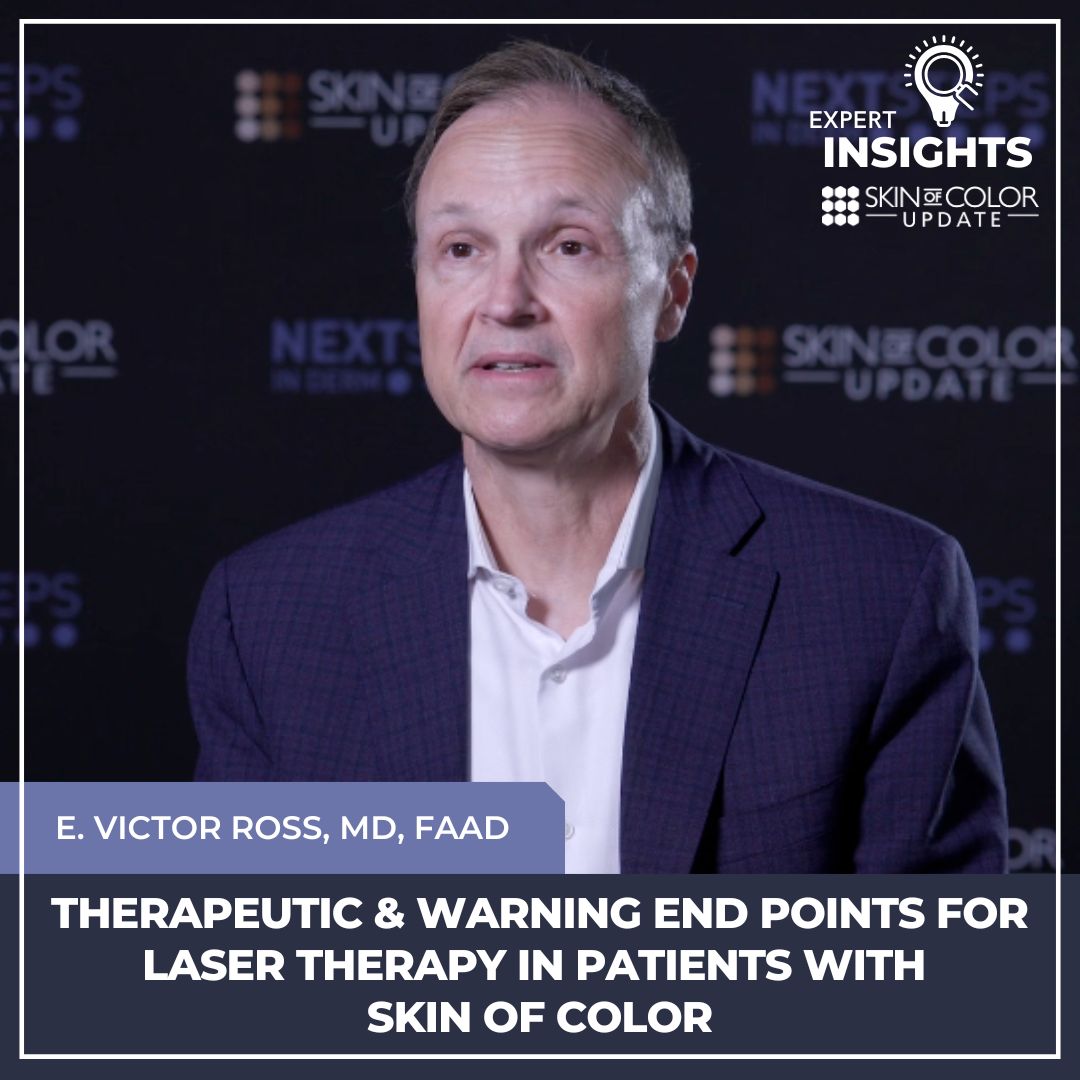Laser end points are important guides for safety and effectiveness, especially in patients with skin of color, according to E. Victor Ross, MD, FAAD. Next Steps in Derm, in partnership with Skin of Color Update, interviewed Dr. Ross, a dermatologist with Scripps Health in San Diego. Watch as he outlines end points for a few laser procedures and shares what you don’t want to see. Find out why Dr. Ross wears magnifying loops even in standard procedures. Learn the role of a cooling device in treating patients with skin of color. Hear how to protect surrounding skin when treating a lentigo. Plus find out how to ensure safety and effectiveness when using a laser that doesn’t have an end point.
Further Reading
If you want to read more about light treatment in patients with skin of color, check out the following articles published in the Journal of Drugs in Dermatology:
Treatment of Mild to Severe Acne Vulgaris With a 650-Microsecond 1064-nm Nd:YAG Laser
ABSTRACT
Background: Effective treatment of acne remains a challenge to dermatologists.
Objective: To evaluate the efficacy and tolerability of a 650-microsecond, pulsed 1064-nm Nd:YAG laser therapy for mild to severe facial acne vulgaris.
Methods: Human subjects of Fitzpatrick skin types I to VI with mild, moderate, or severe acne enrolled in the prospective, single-center study. Subjects received 5 treatments at 2-week intervals with the 650-microsecond, 1064-nm, pulsed Nd:YAG laser. Follow-up visits were 30 days and 90 days after the final treatment. At each visit, subject global assessments, lesion counts, investigator’s global assessments (IGAs), and tolerability appraisals were performed.
Results: The median percent reduction in lesion count was 48.15% after 1 treatment and 83.72% at treatment 3 and remained at 86.67% at 90 days. Sixty percent of subjects noted improvement after treatment 1, and most subjects noticed improvement on or before treatment 3. Median IGA values decreased rapidly to reach a plateau of 1.0 (almost clear) at week 6 and remained there at the 30- and 90-day follow-up. Ninety percent of subjects were slightly to highly satisfied after 3 treatments, and 90% slightly to strongly agreed that their acne treatments improved their self-esteem after 4 treatments. Anesthesia or skin cooling were not used, and adverse events were not observed.
Conclusions: The 650-microsecond, pulsed 1064-nm Nd:YAG laser has been proven to deliver long-lasting clearance of mild to severe facial acne vulgaris with high subject satisfaction and without adverse effects on skin types I to VI.
Laser and Energy Treatments for Acne Scarring: A Review of Clinical Trials
ABSTRACT
Background: Acne scarring can have a detrimental impact on quality of life, making early and effective treatment essential. Lasers and energy-based treatment are the preferred treatment modality, yet a clear consensus on the ideal laser selection is lacking in the literature.
Aims: This review article aims to describe the therapeutic potential of lasers for acne scarring with a focus on clinical trials involving atrophic facial acne scars.
Methods: A search was conducted in PubMed with keywords such as “acne scars”, “laser resurfacing”, “fractional laser”, “nonfractional laser”, “ablative laser”, “nonablative laser”, with attention to clinical trials completed between 2018 to 2022; results were summarized in narrative format.
Results: Improvement in acne scarring is seen from a variety of lasers, with ablative lasers offering the most significant improvement combined with a longer downtime as compared to nonablative lasers. Laser treatment can be combined with a variety of other therapies, including platelet-rich plasma, to increase efficacy. The choice of laser is highly individualized and relies on shared decision-making between the patient and physician.
Conclusion: This study presents an overview of clinical trials in laser treatment for acne scarring between 2018 through 2022. Overall, ablative lasers offered the most significant improvement in acne scars. Laser selection is a patient-centered process that requires attention to the type of scarring present, the patient’s goals, and the advantages and disadvantages unique to each laser.
Did you enjoy this video interview? Find more here.

